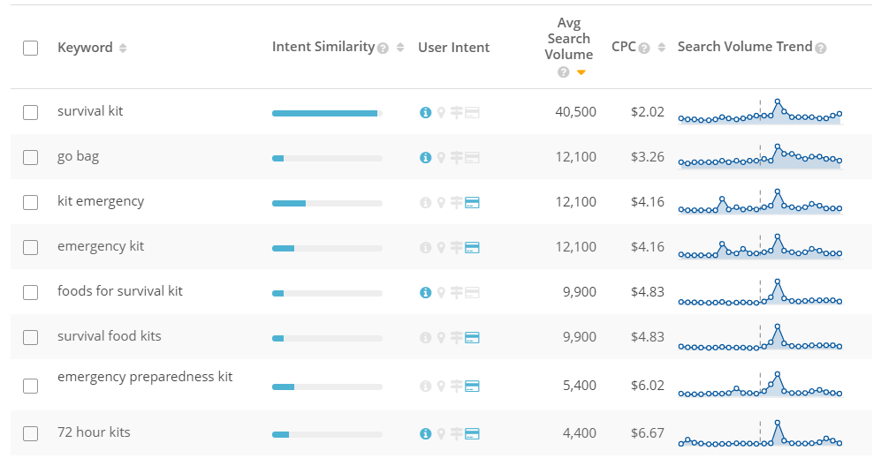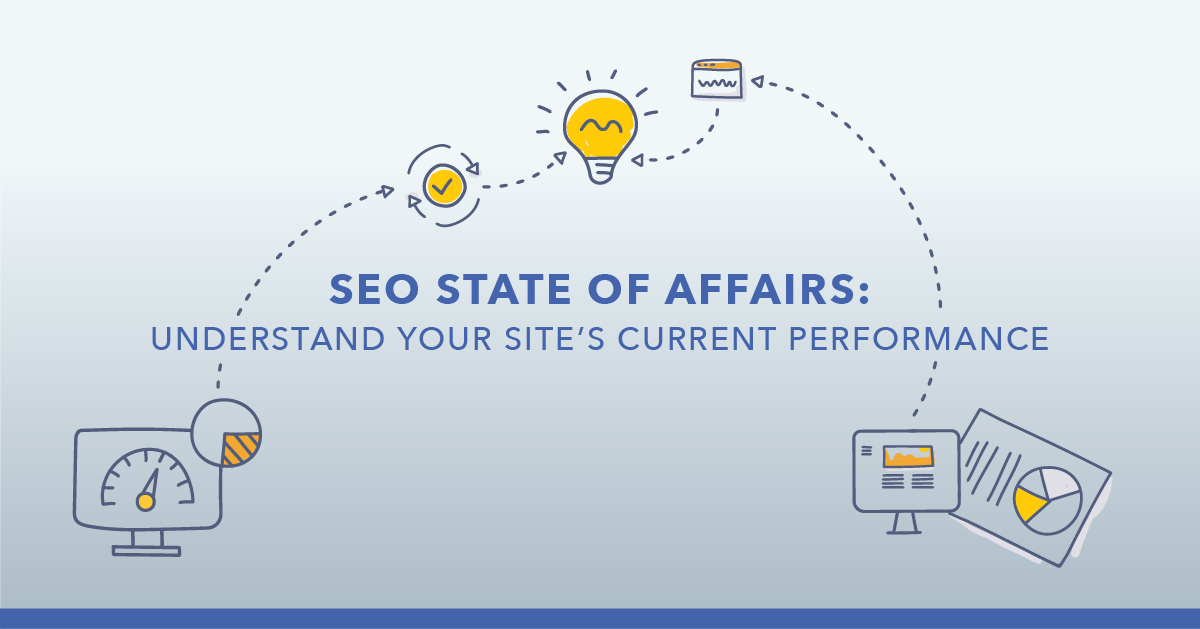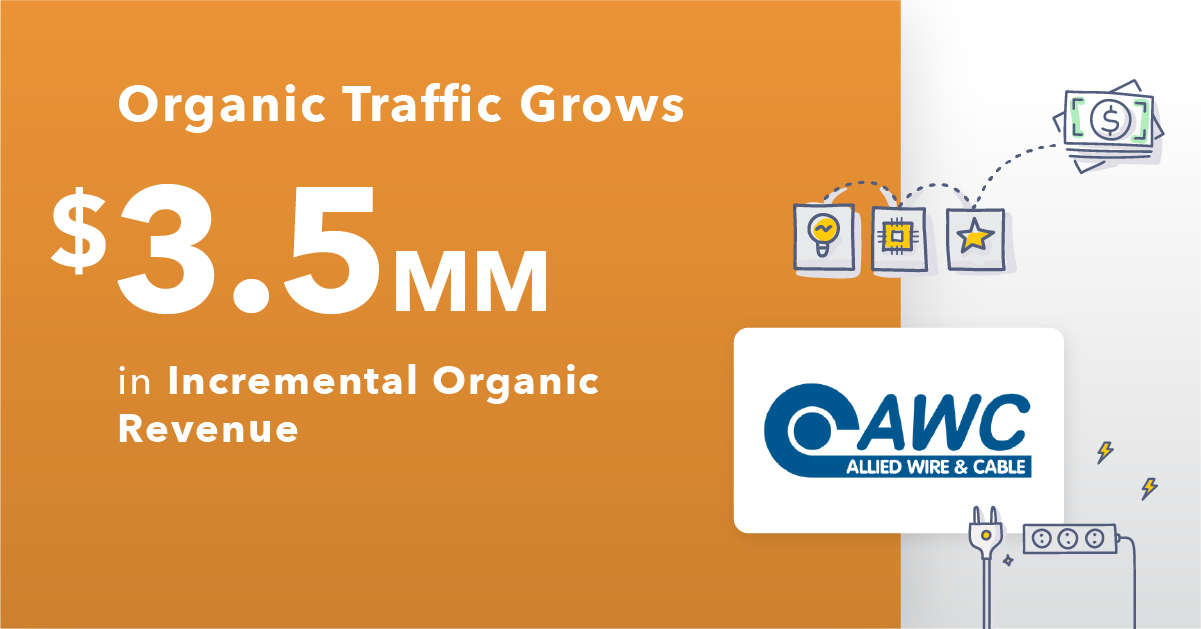A recent internal survey found that nearly 90% of clients are unsure of how to effectively market their brand, collect and analyze data, and maximize their use of software that's designed to help them do these things.
The following guide from our Client Success team is designed to help clients who are new to the seoClarity platform navigate and take full advantage of our resources to identify the keywords that prospective visitors are most likely to use when searching for your product or service.
We call this building your keyword portfolio, and by the end of this guide you'll be able to create content that targets the terms within your portfolio — whether creating new content or optimizing existing content based on keyword priorities.
Why is a Keyword Portfolio Important?
Keywords connect your company's product or service with potential customers in your target market; therefore, SEO is a huge part of marketing success!
However, with constant keyword usage fluctuations (not to mention Google keeping us on our toes with constant algorithm updates), it seems difficult at times to predict what keywords your target market uses most often and which terms you should target or prioritize over others.
Conducting keyword research is one of the most effective ways you can better understand your target market and tailor your campaign to what your users are searching. This research will help you build a keyword portfolio and optimize your content around it, which will more effectively match your target audience with the products and/or services your company has to offer.
The following key statistics further emphasize just how valuable a keyword portfolio can be for your company:
- There are over 5 billion searches on Google per day, averaging to about 2.5 searches per person for the 2 billion people in the world who are online.
- 75% of people click on results on page one of Google.
- 65% of site traffic comes from a search engine; some studies even claim this number is as high as 90%.
Designing the Best System for SEO Keyword Research
Although it's important to optimize your content for search engines, SEO is not about "cheating the system" or building excessive links. It's about understanding what your users want, delivering that to them, distinguishing your brand from the competition, and providing it fast and error-free.
Through research and experience in the field, seoClarity has developed a time-tested system for keyword research.
- Define a strategic approach: Make sure you and your team members in every role and department are making consistent decisions by designing a strategic approach to your marketing campaign. We call this search experience optimization, a methodology that engages everyone in an organization — from the savvy SEO strategist to the crafty content creator.
- Adopt a battle-tested framework: Define exactly what needs to be done and clearly lay out how these tasks will be accomplished. At seoClarity, this is referred to at the URA Framework, aligning all marketing efforts to the user experience by focusing on the core elements of Usability, Relevance, and Authority. You can learn more about this framework in our eBook, Structuring Your SEO.
- Leverage cutting-edge technology: In other words, "work smarter, not harder," with keyword research tools from seoClarity to accelerate and scale execution.
Building the Perfect Keyword Portfolio
The primary challenge of building a perfect keyword portfolio is sifting through the thousands of keywords that are driving traffic to your site (or the terms for which you currently rank) and determining which keywords to prioritize and track within an enterprise SEO platform.
This is where our BOBs method is going to be helpful (more about that in a moment). This method helps you identify keywords that are relevant to your industry. From there, you can narrow it down to those keywords that are ranked higher. Finally, you can select only the keywords that drive traffic.
To further build out your portfolio, you will want to use the seoClarity platform for completing the following tasks:
Identify Seed Terms and their Variations
seoClarity helps you identify seed terms and their semantically-related variations by displaying them in an easily digestible format through with topic research.

(Topic Explorer in the seoClarity platform.)
Determine the Relevance of Gathered Keywords
With Content Gaps, utilize machine-learning analysis to execute the Wisdom of the Crowds approach against all your biggest competitors. This reveals opportunities where your competition ranks, but you don't.
Get to Know BOBs: A Keyword Portfolio Framework
Your keyword portfolio should be made up of three key categories: Benchmark, Optimize, and Build. A fourth category, Special Projects, may also apply for your content planning strategy (see below). The following provides a bit more insight into this handy acronym.
1. Benchmark (30% of keyword portfolio)
Your benchmark keywords are those that affect your current performance. These keywords drive at least 60% of non-brand clicks and are derived from the methodology of selecting non-brand keywords from the Search Console.
2. Optimize (30% of keyword portfolio)
Optimized keywords are those for which the company ranks, though not on page one. The method for finding these keywords involves using the Research Grid to find high search volume keywords.
3. Build (30% of keyword portfolio)
Build keywords are those for which the company does not rank but are still relevant. This method involves examining those terms where two or more of your competitors rank but you do not and incorporating their high-ranking keywords into your portfolio.
4. Special Projects (10% of keyword portfolio)
Special projects account for a much smaller portion of your keyword portfolio. These come from more experimental methods for one-off projects and tests. Add these terms for long-term strategy and keyword planning.
Maximum Keyword Capacity: Pull Back or Add More?
After you've established your keyword portfolio, it's time to monitor your rankings and overall performance.
Nearly all SEO technology providers base their packages on the number of keywords tracked and domains managed, so what happens when you've reached your managed keyword capacity?
There are two options available: clean up your portfolio, or increase your subscription.
In our experience, we often see the ultimate decision being made based on budget and a company's overall buy-in to SEO.
We recommend you look at your overall budget and subsequent ROI, and ask yourself what your goals are. This allows you to analyze your investment compared to what you're getting in return.
If you're in a growth phase, you may want to add new keywords to your portfolio and continue to grow the keywords that you're relevant for (and in turn, continue to grow your search visibility and SEO program as a whole).
If your site and your keyword universe has grown over the past few years, you most likely can be doing even more.
Conversely, you may have a lot of queries that you're relevant for, but you may rank 20+ so there's no traffic. You can of course work to optimize those keywords and pages (here's a great resource for boosting search visibility) but you don't have to tackle it all at once.
Try to focus on 5% of those keywords to give them adequate attention, and monitor the results.
If those keywords continue to contribute little to your ROI, consider repeating the BOBs analysis and swapping them out for more viable terms. If you're an seoClarity client, your Client Success Manager can help with this.
Or, you can consider SEO statistical sampling, which revolves around the concept of continuously rotating your keyword set to pull in fresh insights.
Conclusion
seoClarity ensures that companies from various industries and various sizes get the information they need to build a successful marketing campaign quickly and effectively. By offering helpful keyword research tools, users can stay up to date on new trends and tap into previously untapped markets.
Commonly Asked Question & Key Takeaways
Q: What if my company already has an approach to building a keyword portfolio?
A: Many companies already have an approach to keyword research, but this doesn't mean they wouldn't benefit from a new, more comprehensive strategy, like the one offered above. A second opinion never hurts, and seoClarity can help companies access data that they likely did not have access to before. More importantly, the results tend to speak for themselves.
Let's quickly review some key takeaways from this guide.
- Having a keyword portfolio is important because it demonstrates which keywords your target market is searching for and how to tailor your campaign to them.
- Create a strategic approach by identifying seed terms and their variations, determining the relevance of gathered keywords, and leveraging seoClarity's cutting-edge technology.
- Don't forget about Bob(s)!: Benchmark, Optimize, Build, (and Special Projects).
For a more in-depth look at keyword research, check out our enterprise guide to our full keyword research workflow.
Editor’s Note: This content series showcases consistent and repeatable SEO workflows for content marketers and SEOs to see the power of our platform and the solutions our clients are raving about, according to our Client Success Team. Not a client yet? Book a demo with us today to see our platform in action!







Comments
Currently, there are no comments. Be the first to post one!